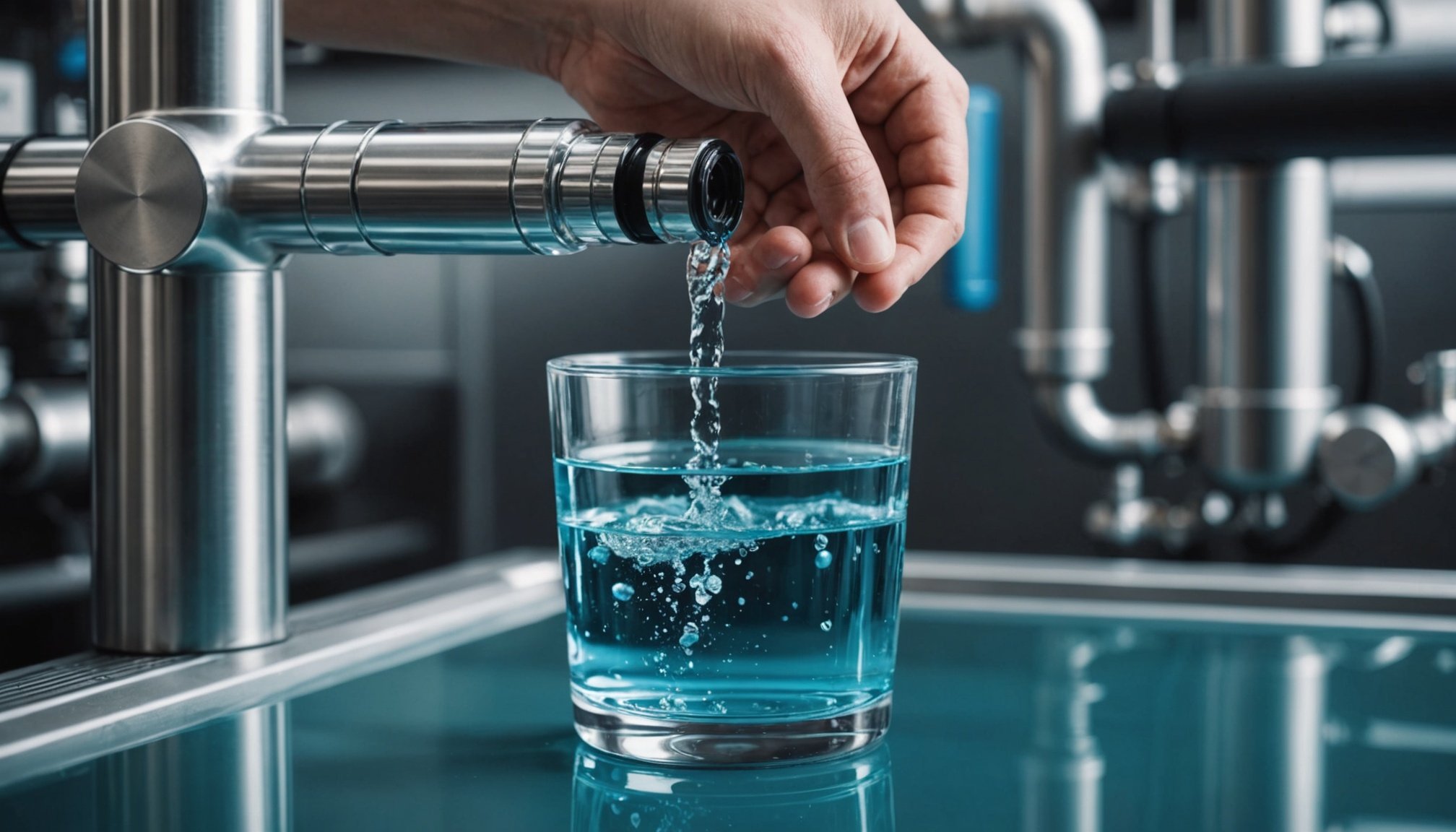Overview of Nanofilter Technology
Nanofiltration is a cutting-edge water purification technology designed to remove contaminants at a molecular level. At its core, nanofiltration involves using a membrane with pore sizes in the nanometer range to filter water. This process efficiently eliminates specific contaminants, such as organic molecules, multivalent ions, and larger monovalent ions, while smaller monovalent ions are often allowed to pass through.
Key Principles of Nanofiltration
One of the central principles of nanofiltration is size exclusion. The pores of the nanofilter membrane are incredibly small, enabling effective filtration processes by blocking larger particles and allowing smaller ones to pass. In addition to size exclusion, nanofiltration employs charge exclusion. The membrane can be positively or negatively charged, which helps repel or attract certain ions, enhancing the removal of charged contaminants.
Have you seen this : Reimagining history: the impact of cutting-edge robotics on restoring uk’s historic landmarks
Comparison with Traditional Filtration Methods
Nanofiltration distinguishes itself from other filtration methods, such as microfiltration and ultrafiltration, by its ability to precisely target a broader range of contaminants. While microfiltration is mostly for removing large particles, nanofiltration excels in capturing smaller molecules. Compared to reverse osmosis, nanofiltration typically offers higher flow rates and requires less energy, making it a more efficient option for certain applications. These features make nanofiltration a versatile and potent contributor to modern water purification technology.
Benefits of Nanofilter Technology
Nanofilter technology provides numerous health benefits by enhancing water cleanliness. It reduces potentially harmful chemical and microbial contaminants, ensuring that the water consumed is both safe and of high quality. By filtering out these unwelcome substances, the technology significantly decreases the risk of waterborne diseases and promotes overall well-being.
This might interest you : Revolutionizing Emergency Medical Services: The Impact of Drone Technology in Rural Areas of the UK
The innovation also plays a crucial role in minimizing the environmental impact. Unlike traditional filtration methods, nanofilters require fewer resources and generate less waste. This sustainable approach not only conserves natural resources but also reduces the carbon footprint associated with water purification processes, contributing to a more eco-friendly solution.
Moreover, nanofilters have been shown to excel in removing specific contaminants like pesticides, heavy metals, and pathogens that can otherwise slip through conventional filters. This precision in purification ensures that what looks like clean water is genuinely safe for consumption and thus supports a healthier lifestyle.
In essence, nanofilter technology embodies a forward-thinking approach to water purification:
- Boosting water quality and safety
- Lowering health risks with comprehensive filtering
- Advancing environmental sustainability with reduced waste and resource efficiency
This makes it a valuable advancement in our ongoing quest for cleaner, healthier, and more sustainable water solutions.
Applications of Nanofiltration in Various Industries
Nanofiltration has emerged as a transformative technology across multiple sectors. Its effectiveness in industrial applications has revolutionized water treatment processes, particularly within municipal water systems. Many municipalities have implemented nanofiltration to remove contaminants and improve water quality, thanks to its ability to filter out small molecules and ions. For example, cities have reported significant reductions in pollutants, highlighting the efficiency of this method.
Agriculture benefits substantially from nanofiltration by enhancing irrigation systems. Farmers can optimize water usage through filtration, thus reducing waste and promoting sustainable practices. This technology not only purifies water, making it safe for crops but also facilitates water recycling, which is crucial in areas facing water scarcity. By implementing these systems, the agriculture industry underscores its commitment to sustainability and resource efficiency.
Industries have adopted nanofiltration to boost water reuse and processing efficiency. Specific industrial applications include the reuse of wastewater, reducing the overall consumption of fresh water. This practice is especially valuable in sectors such as pharmaceuticals and food processing, where water purity is paramount. The adoption of nanofiltration across these industries reflects a broader shift towards environmentally conscious and economically viable water management practices.
Comparison with Traditional Water Purification Methods
The effectiveness of nanofiltration can be strikingly superior to traditional water purification methods. For instance, traditional filtration techniques, such as reverse osmosis and carbon filters, are generally effective but come with their limitations. While reverse osmosis is known for its thorough cleaning capabilities, it can be costly and resource-intensive. Similarly, carbon filters excel at removing chlorine and other organic compounds but fall short when tackling more complex contaminants.
Nanofiltration shines with its balance of cost-effectiveness and efficiency. It works by using membranes with very small pore sizes, allowing it to effectively remove a wide range of impurities, from organic molecules to certain ions. This makes it a robust solution compared to traditional water purification methods. Furthermore, nanofiltration typically consumes less energy than reverse osmosis, making it a more sustainable option for water treatment.
Traditional methods often struggle with modern water challenges, such as pharmaceutical residues and microplastics. These limitations highlight the urgent need for more advanced technologies like nanofiltration. As water quality issues become more intricate, the demand for solutions that can address a wider spectrum of contaminants is crucial. Overall, exploring advanced filtration techniques is essential in ensuring access to safe and clean water.
Challenges and Limitations of Nanofiltration
Nanofiltration systems, while advanced, encounter several technical challenges. These challenges primarily arise from the complex nature of the membranes and their interaction with various substances. For example, the membrane selectivity must be finely tuned to ensure that only desired ions or molecules pass through, necessitating meticulous engineering and materials science.
Moreover, maintenance issues are a significant concern. Regular cleaning and the replacement of membranes are required to maintain efficiency and longevity. This process can be costly and requires specialized knowledge, making it cumbersome for facilities lacking technical expertise. Fouling, a common problem where particles clog the membranes, can drastically reduce performance and increase the frequency of maintenance, thus adding to operational burdens.
In terms of economic implications, the cost barriers of nanofiltration systems can hinder their wider adoption, especially in underdeveloped regions. The initial investment is often substantial, requiring not only the equipment but also infrastructures, such as appropriate filtration facilities and skilled personnel. For communities with limited financial resources, these systems may be inaccessible, highlighting the necessity for cost-effective solutions or subsidies to bridge this gap. While advancements continue to reduce costs, economic considerations remain a pivotal factor in the implementation of nanofiltration technology.
Future Prospects of Nanofiltration Technology
Exploring the future innovations in nanofiltration technology, we find a landscape rich with opportunity and potential advancements. Engineers and scientists are driving the field forward, developing nanofilters with enhanced capabilities to improve efficiency and reduce costs.
Emerging Trends in Nanofiltration
One of the most significant technology advancements is the customization of nanomaterials to target specific pollutants. By tailoring materials at the molecular level, researchers can increase the selectivity and efficiency of nanofiltration processes. There is also an exciting trend towards integrating nanofiltration with other purification technologies such as reverse osmosis and ultraviolet filtration, aiming to achieve a hybrid solution offering superior performance.
Sustainable Solutions and Predictions
Sustainability trends highlight the move towards eco-friendly materials and energy-saving processes. Nanofiltration technology promises reduced chemical waste and energy consumption, aligning well with global efforts to lower environmental impacts.
Global Water Issues Impact
As the world faces increasing water scarcity, nanofiltration holds transformative potential. Predictions indicate it will play a pivotal role in addressing global water challenges by providing decentralized and efficient water purification solutions, especially in regions where traditional methods fall short. Embracing these sustainability trends and technology advancements could significantly improve water accessibility and quality worldwide.






